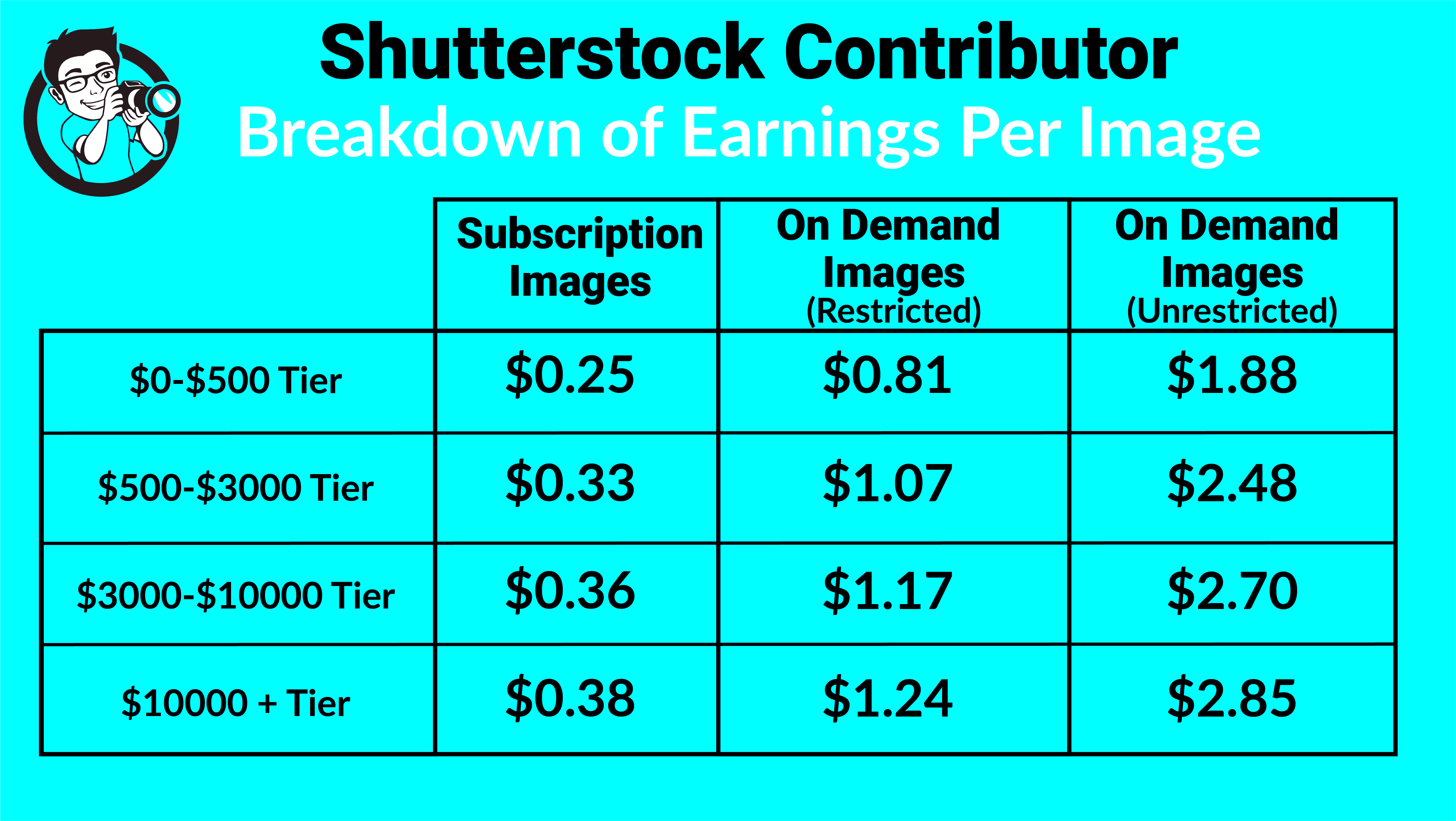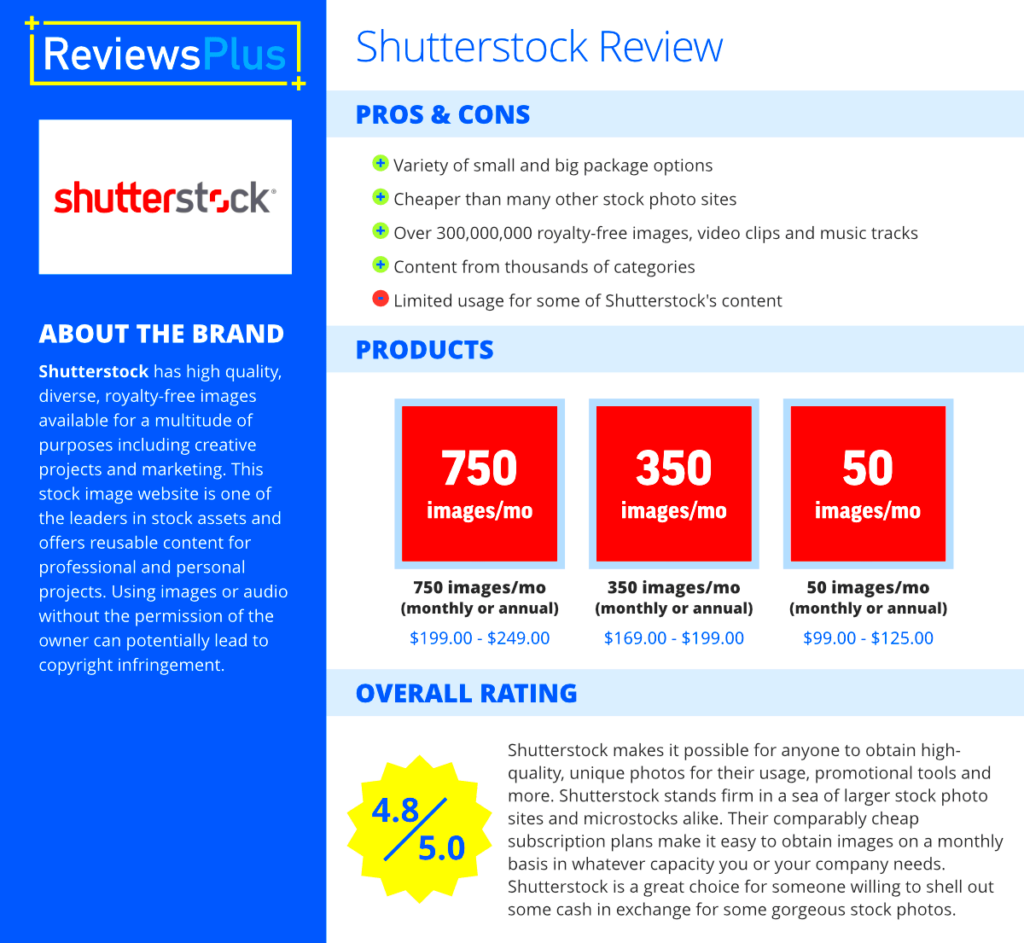The Shutterstock review process is essential for maintaining quality and consistency in the images available on their platform. When you submit your photos, they go through a thorough evaluation to ensure they meet Shutterstock's standards. This process can take some time, but understanding how it works can help you manage your expectations.
Here’s a quick overview of the Shutterstock review process:
- Submission: You upload your photos through the contributor portal.
- Initial Screening: Shutterstock checks for basic issues like format, size, and quality.
- In-Depth Review: Professional reviewers examine your photos for technical quality, originality, and relevance.
- Feedback: You receive either approval or constructive feedback to improve future submissions.
Understanding this process can help you appreciate the work that goes into curating high-quality content on Shutterstock.
Factors That Influence Review Time

Several factors can affect how long it takes for Shutterstock to review your photos. Knowing these factors can help you set realistic expectations and possibly improve your submission strategy.
| Factor | Impact on Review Time |
|---|---|
| Volume of Submissions | High volumes can slow down review times. |
| Quality of Photos | Higher quality submissions may receive faster approvals. |
| Reviewer Availability | Availability of reviewers can affect processing times. |
| Technical Issues | Any technical problems can lead to delays. |
By understanding these factors, you can focus on submitting high-quality images that may enhance your chances of a quicker review.
Also Read This: Creative Ways to Make a Doll Cake
Common Reasons for Delays in Photo Approval

While Shutterstock strives to review submissions promptly, delays can happen. Here are some common reasons why your photo approval might take longer than expected:
- Inadequate Metadata: Missing or incorrect titles, keywords, or descriptions can hold up your approval.
- Technical Flaws: Issues like low resolution, improper lighting, or excessive noise can lead to rejection or longer reviews.
- Content Issues: If your photo includes copyrighted material, recognizable faces, or inappropriate content, it will face delays.
- High Submission Volume: Busy periods can mean longer wait times for everyone.
To avoid these pitfalls, always double-check your submissions for quality and compliance with Shutterstock's guidelines. This proactive approach can help ensure a smoother review process.
Also Read This: Exposure Unleashed: The Steps to Submitting Photos to Getty Images
How to Speed Up the Review Process

If you want your photos to get approved faster on Shutterstock, there are several strategies you can use. While some factors are out of your control, focusing on the elements you can manage can make a big difference. Let’s explore some practical tips to help speed up the review process.
- Submit Quality Images: Ensure your photos are high resolution and well-composed. This can help reviewers approve your work faster.
- Use Accurate Metadata: Fill out titles, keywords, and descriptions carefully. The more relevant information you provide, the easier it is for reviewers to categorize your images.
- Avoid Common Mistakes: Familiarize yourself with Shutterstock's submission guidelines. Avoid submitting images with technical flaws, such as blurriness or poor lighting.
- Limit Your Submissions: If you submit too many images at once, it might overwhelm the review team. Try to space out your submissions to maintain quality over quantity.
By following these tips, you can help improve your chances of a quicker review process, allowing your photos to reach potential buyers sooner.
Also Read This: Ultimate Guide to Crafting Rubber Bracelets
What Happens After Your Photos Are Approved
Congratulations! If your photos have been approved by Shutterstock, it’s a significant milestone. But what comes next? Understanding the steps following approval can help you maximize your success as a contributor.
Here’s what typically happens:
- Live on the Platform: Your approved images become available for customers to purchase. They will be searchable by keywords and categories.
- Earnings Begin: Each time someone purchases your photo, you earn a royalty. Your earnings can vary based on factors like the license type and your contributor level.
- Performance Tracking: You can track how well your images are selling through your contributor dashboard. This information can help you understand what types of content are popular.
Once your photos are live, focus on continuing to submit high-quality images to build your portfolio and increase your earnings.
Also Read This: Understanding Connection Levels on LinkedIn: 1st, 2nd, and 3rd Connections
Dealing with Rejections and Feedback
Rejections are a common part of the creative process, and Shutterstock contributors are no exception. Understanding how to deal with rejections and utilize feedback can help you grow as a photographer.
Here are some steps to take when you receive a rejection:
- Read the Feedback: Shutterstock often provides specific reasons for rejection. Take the time to understand their feedback to improve your future submissions.
- Reflect and Revise: If your photos were rejected due to technical issues or poor quality, consider reworking them. Adjust the lighting, composition, or sharpness before resubmitting.
- Learn from Examples: Review successful submissions by other contributors. This can give you insights into what works well on the platform.
- Don’t Take It Personally: Remember, rejection is part of the learning process. Every photographer faces it, so don’t let it discourage you.
By approaching rejections with a constructive mindset, you can turn setbacks into opportunities for growth and improvement.
Also Read This: The Future of Twitter: What You Can Expect from the Social Media Giant
Frequently Asked Questions
Many contributors to Shutterstock have similar concerns and questions about the review process and what it entails. Here, we’ve compiled some frequently asked questions to help clarify common doubts.
- How long does the review process take?The review time can vary, but it typically ranges from a few days to a week, depending on submission volume and photo quality.
- Can I resubmit rejected photos?Yes, you can revise and resubmit your rejected photos. Just make sure to address the issues mentioned in the feedback.
- What types of photos are most likely to get approved?High-quality, well-composed images that follow Shutterstock’s guidelines tend to get approved more quickly. Images that cater to current trends are also beneficial.
- How can I track my earnings?You can track your earnings through your contributor dashboard on Shutterstock, which provides detailed insights into your sales.
- What if I have a specific question about my submission?If you have specific questions, you can contact Shutterstock’s support team for assistance.
By addressing these frequently asked questions, you can gain a clearer understanding of the Shutterstock review process and how to navigate it effectively.
Conclusion and Final Thoughts
Understanding the Shutterstock review process, including how to speed it up, what happens after approval, and how to handle rejections, is crucial for any contributor. By focusing on quality, adhering to guidelines, and learning from feedback, you can enhance your chances of success. Remember, photography is a journey of continuous learning, and each submission brings new opportunities for growth.
